You may think that you need a lot of space to grow berries, but I’m here to tell you that thanks to the breeding of new cultivars, gardeners who prefer to grow in containers can add berries to their line-up!
The quickest way to grow berries is by purchasing bare-root crowns or transplants, though patient gardeners may choose to start them from seed. Pay attention to cold hardiness and soil temperatures needed and add them to your garden accordingly after properly preparing your container or pot.
Now, let’s get into a few different types of berries and 15 varieties of compact plants that grow well in containers.
Raspberries
Most raspberries are naturally tall, thorny, and unruly, but in recent years, several compact hybrids have been released. They are more suitable for small space and patio growers who prefer using containers.
‘Bushel and Berry® Raspberry Shortcake®’
This thornless, self-pollinating, and compact revolution was created for container growers. It offers delicious, medium-sized berries with a unique hint of vanilla.
Plants are low-maintenance and have a rounded growing habit that requires no staking.
‘Raspberry Shortcake®’ grows to two to three feet and berries will be ready for harvest in the summer. Maintain well-draining soil with a pH of 6.0 to 6.2.
‘Glencoe Purple’
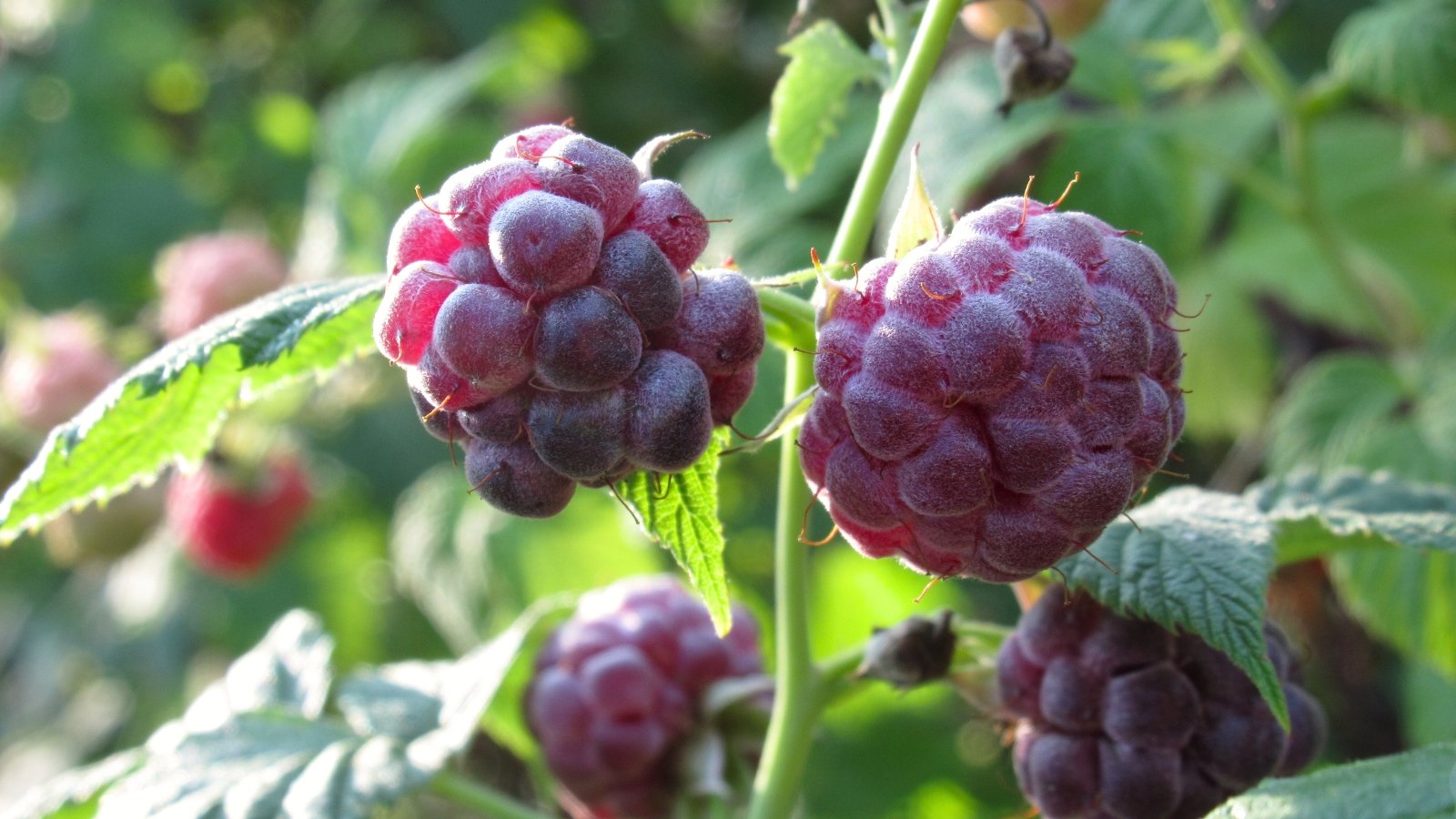
‘Glencoe Purple’ is a cross between a native black raspberry and a red raspberry, developed by the Scottish Crop Research Institute. It’s a non-spreading, bushy plant made for container growing.
These gorgeous purple berries will be ready for harvest in late summer. They’re soft, juicy, and sweet, outrageously delicious in or on desserts. It’s a high-yielder with good freezing capabilities.
The plants do well in extreme heat, but keep your eye on the water levels. Remember, plants grown in containers can’t stretch their roots down to find water, so it’s up to you to keep them hydrated! Mulching can help to protect roots and keep the soil cool while maintaining moisture.
‘Heritage’
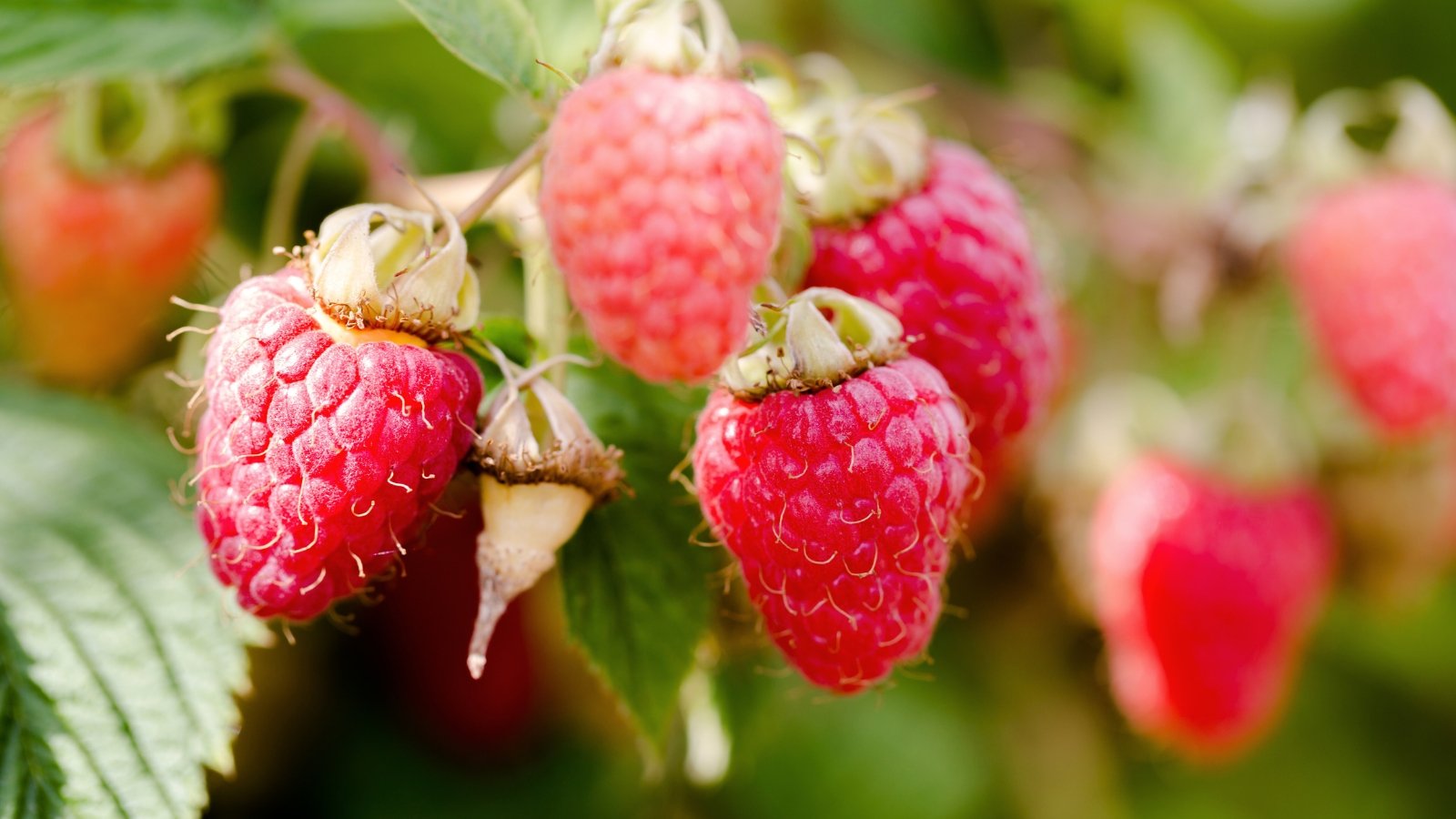
‘Heritage’ berries are large, firm, and mild, with a little tartness. The color is dark red, and they’re perfect to eat fresh or process into jams and jellies.
This bush raspberry will produce a flush of berries in the summer with a larger yield in August or September into the first frost, depending on your growing zone. Watch out for the thorns when harvesting. While planting a second variety is optional because ‘Heritage’ is self-pollinating, it may increase yields.
Bonus: ‘Heritage’ performs well even in poor-quality soil.
Strawberries
Strawberry varieties that stay compact and produce few runners will perform best in containers.
‘Red and Yellow Wonder Blend’ Strawberry
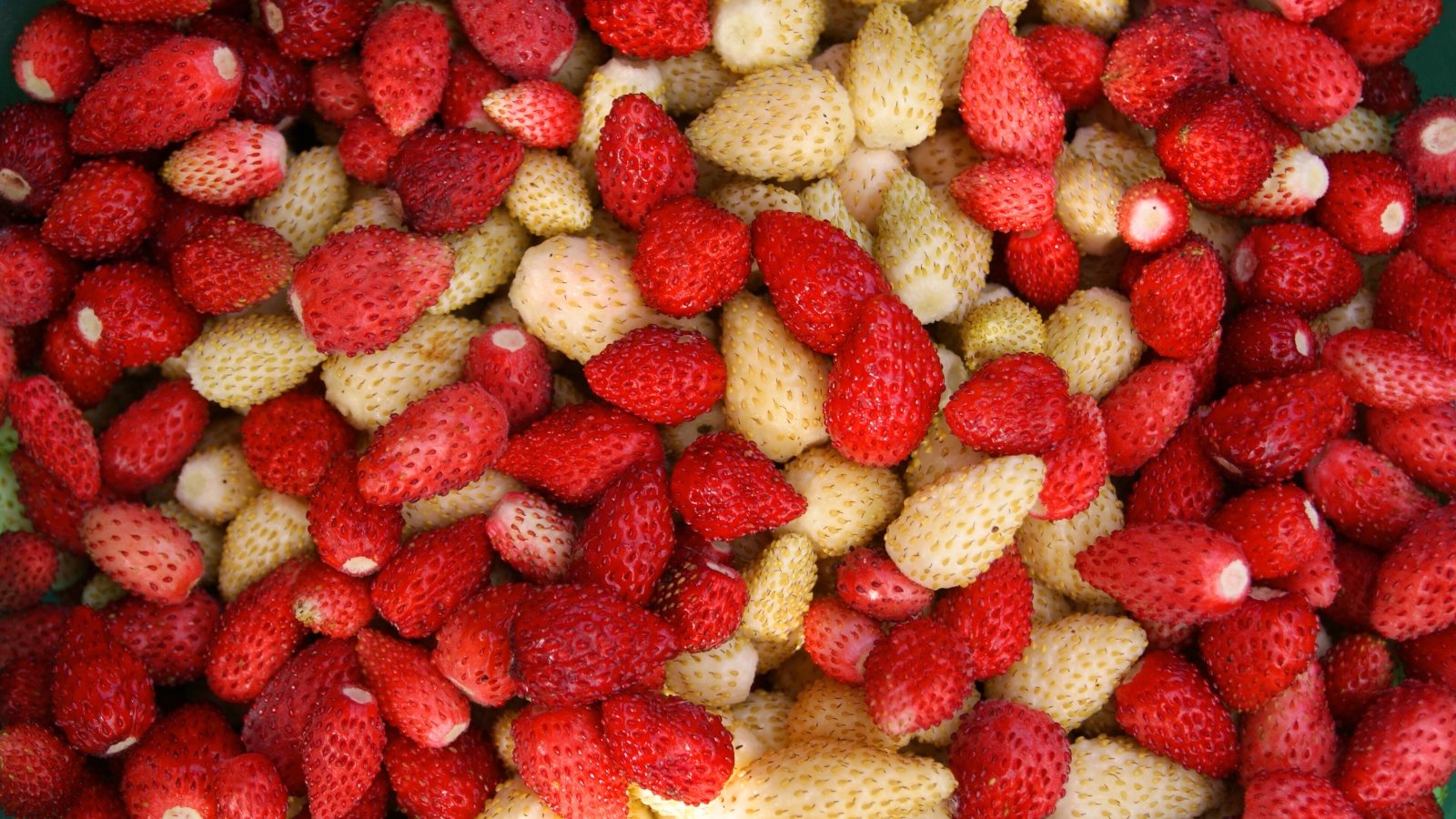
‘Red and Yellow Wonder Blend’ berries produced are sized between wild and standard cultivated strawberries with excellent flavor and aroma, about the size of a thimble. It’s an alpine variety made for container growing.
These plants remain under a foot tall and produce very few runners, making them perfect for containers. If you do spot runners, just snip them off, and the plant will send energy back into the main plant.
‘Red and Yellow Wonder Blend’ is fairly easy to start from seed indoors 14 to 16 weeks before the last spring frost. The fruits will be ready to harvest in about 120 days.
‘Tristar’
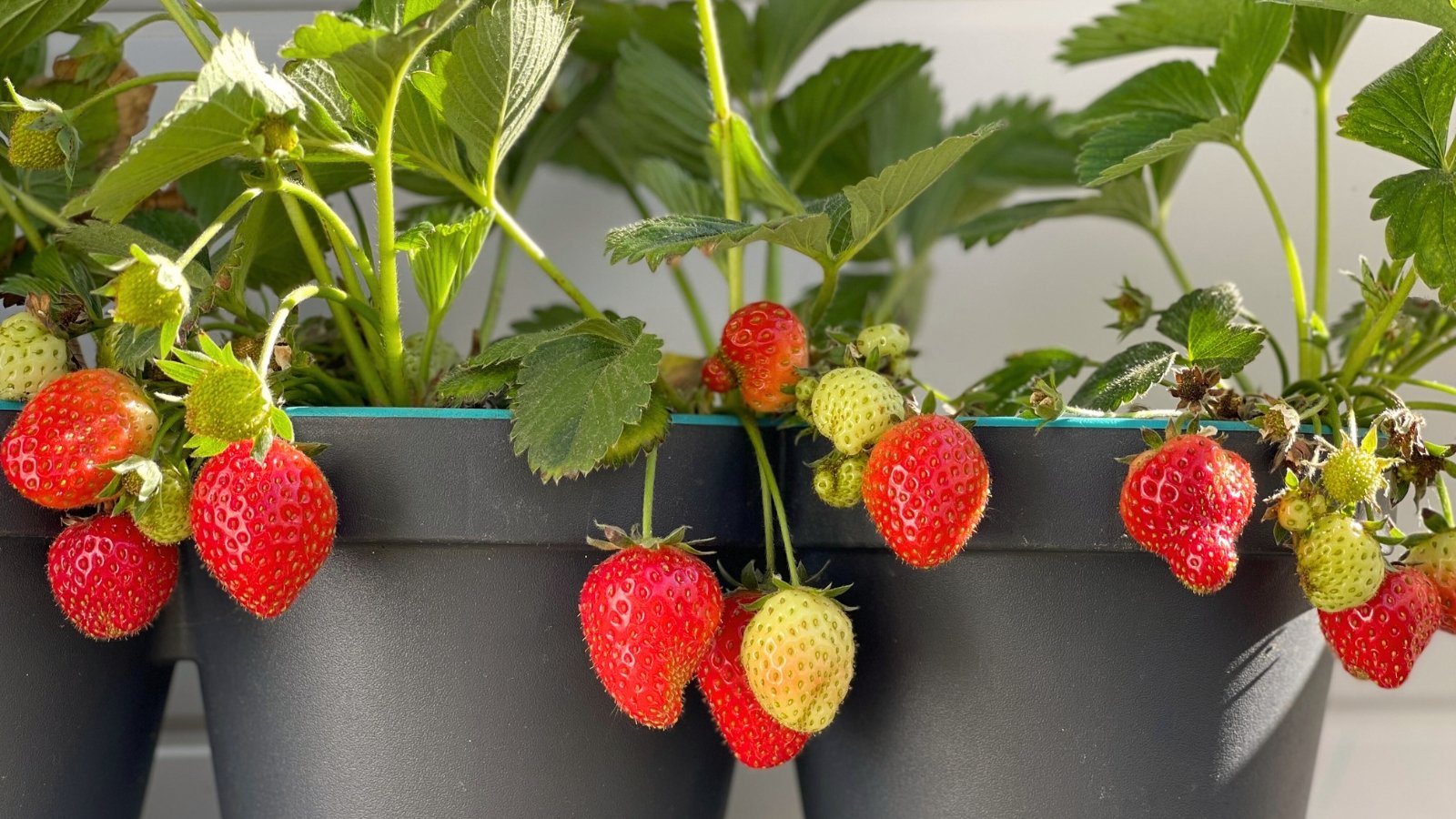
‘Tristar’ is the perfect berry plant to put on display for its attractive flowers, notched leaves, and gorgeous deep red berries. It performs well in hanging baskets, large containers, or window boxes.
Their exceptionally sweet berries are perfect for jams, jellies, and pies. Plants are cold-hardy and will produce from spring to frost, providing a heavy crop in the early and late seasons and slowing down during summer heat.
Ensure proper drainage to reduce the risk of disease.
‘Albion’
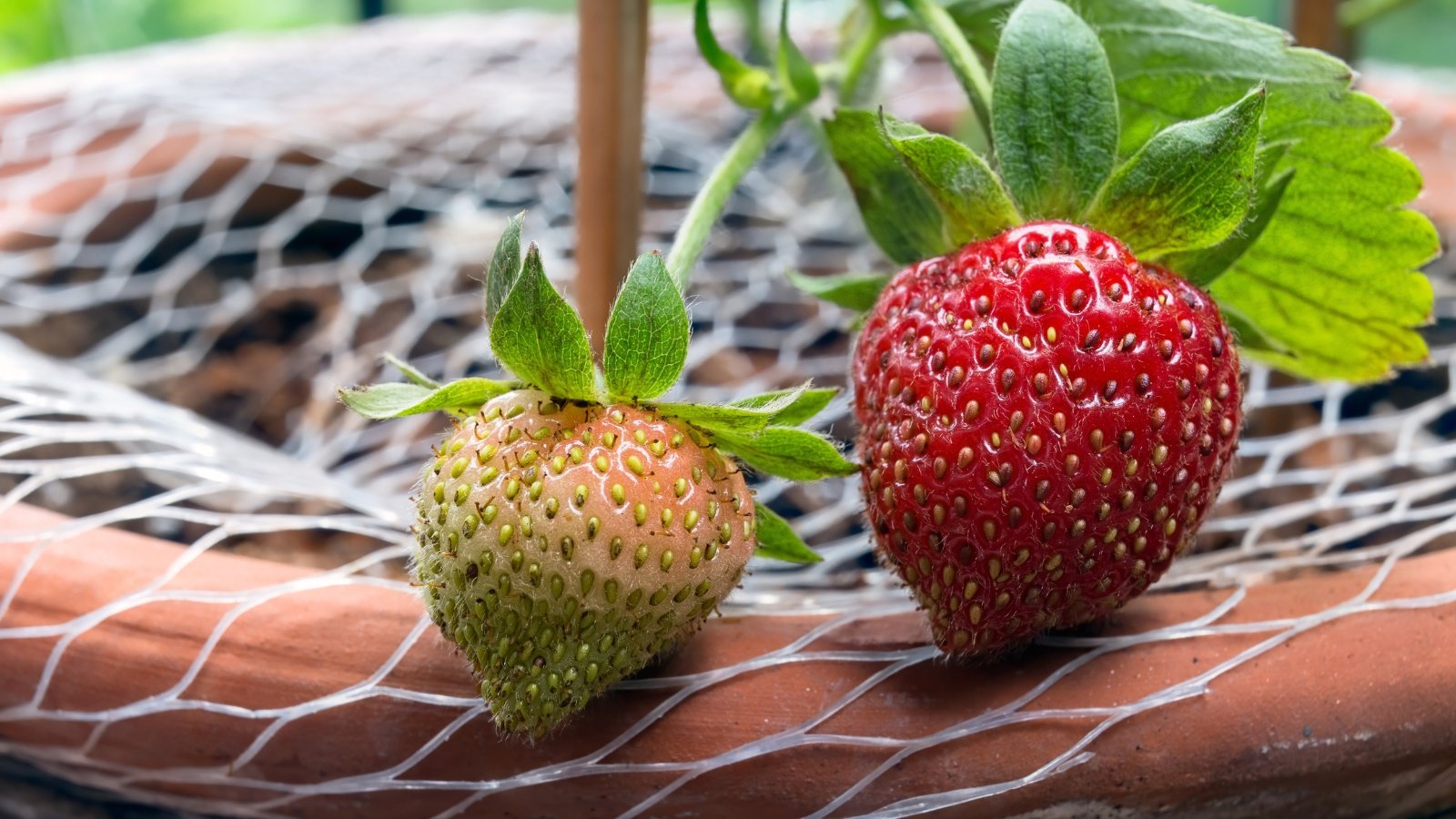
‘Albion’ produces large, firm berries with good flavor. Plants grow fast and perform well in extreme heat.
This variety is known for its consistently high yields, hardiness, and excellent disease-resistance package including verticillium wilt, anthracnose, and crown rot. This tried-and-true variety was introduced in 2006 and has been popular among commercial and home growers ever since.
Don’t overcrowd plants in containers, especially ‘Albion’. They’ll do best with proper spacing.
Blueberries
Blueberries need a soil pH of 5.5 or below, which is easier to adjust and maintain in containers.
‘Northsky’ Blueberry
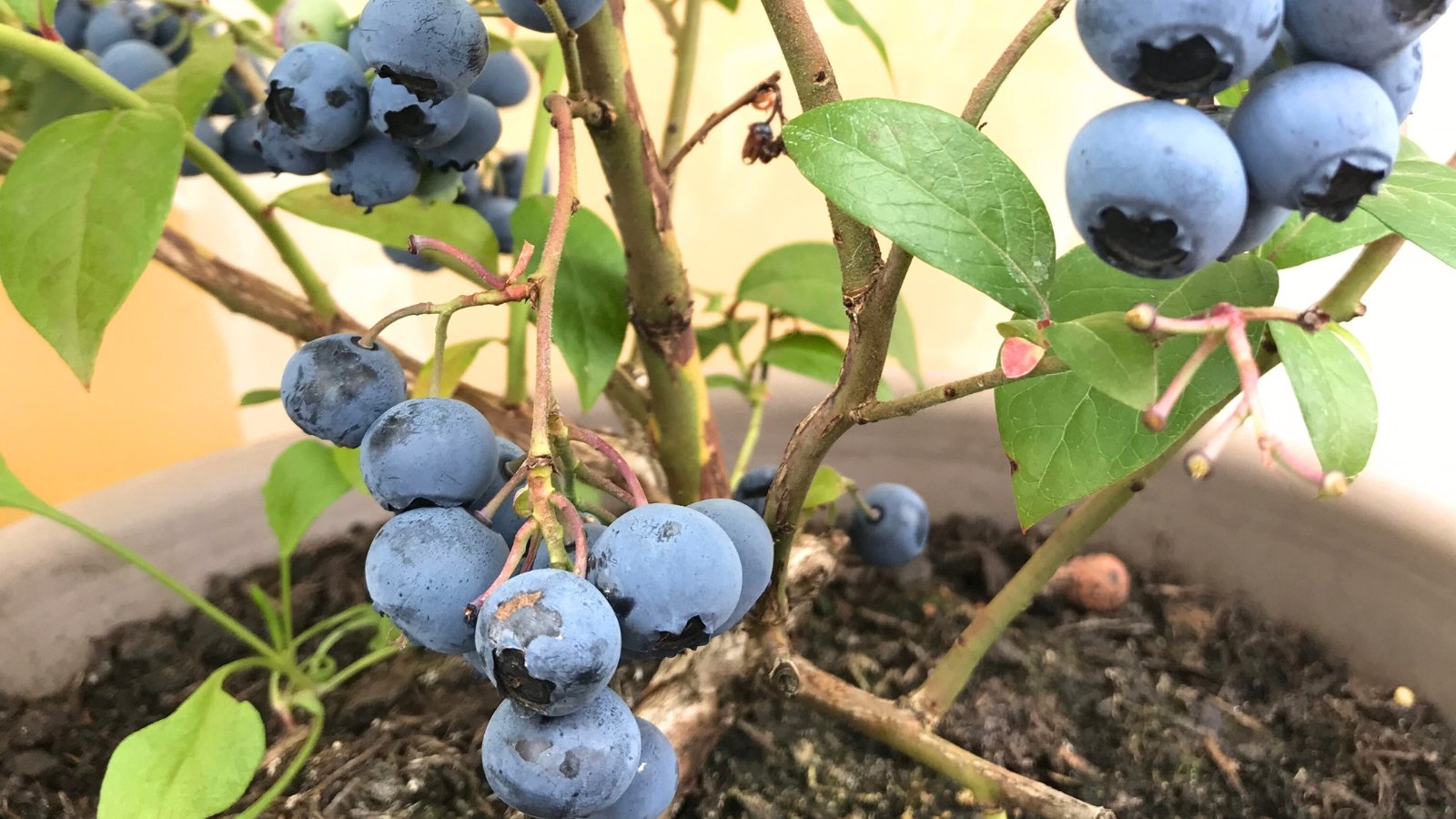
‘Northsky’ is a lowbush dwarf variety that produces wild-like, sweet berries. Growing blueberries in containers makes it easy to move around throughout the year as weather and sun placement change.
Its extreme cold hardiness makes it great for northern growers, but it performs well in the south, too. Plants will bear a small amount of fruit in their second year, reaching full maturity in about six years, when they can produce up to ten pounds per season. Harvest will be heaviest from June to August.
A flush of white flowers will appear in the spring, and its beautiful foliage can be enjoyed all season long. Mulch to help the roots stay cool and retain moisture.
‘Sunshine Blue’
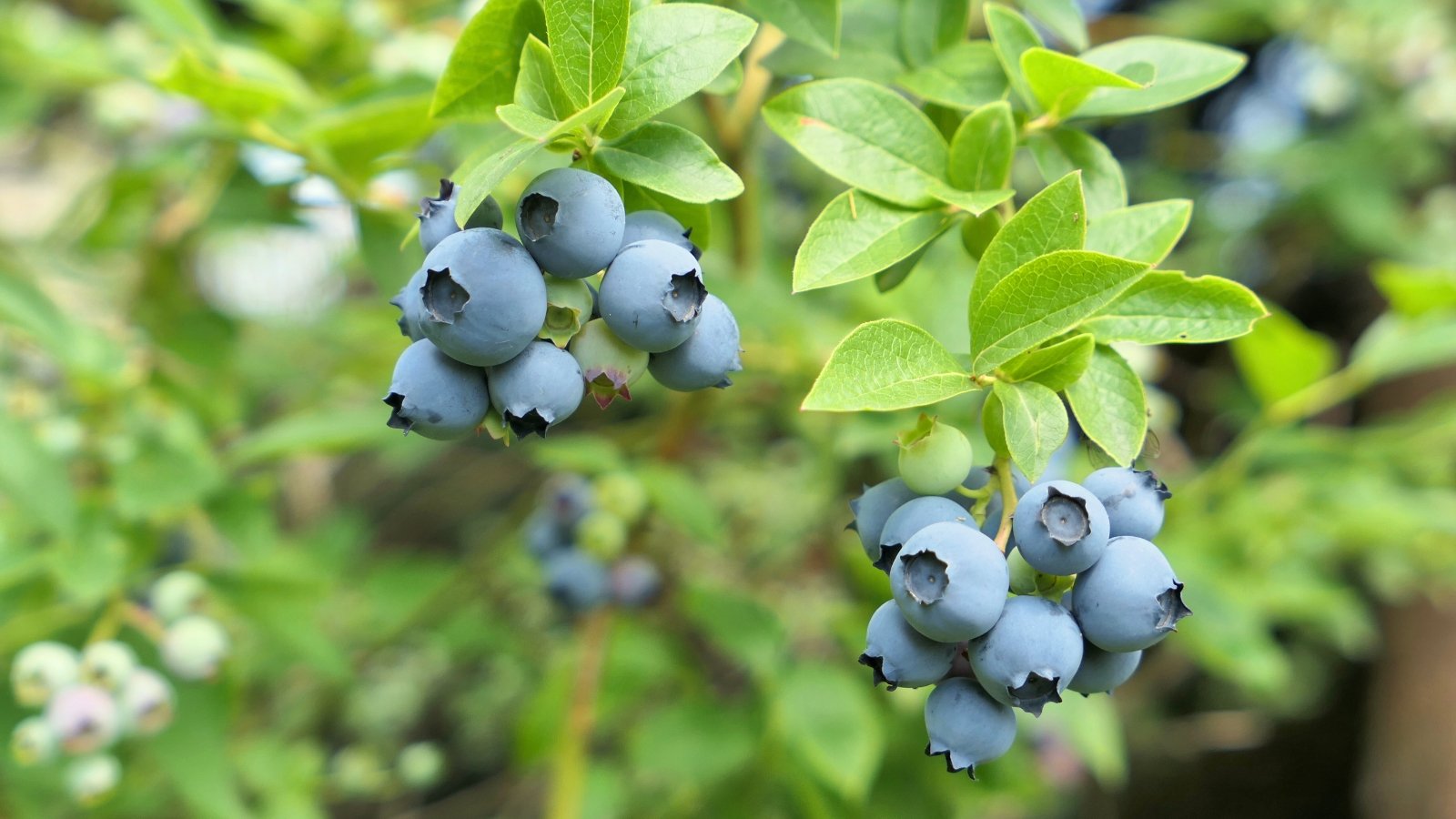
‘Sunshine Blue’ berries are medium-sized, rich, and sweet and arrive late in the season. The flowers are a cheerful bright pink, and the plants are self-pollinating.
This semi-evergreen blueberry bush only requires 150 hours of cold dormancy and loves the heat and sun of summer, making it a great choice for growers across zones.
The blue-green foliage transitions to maroon in the fall. When the berries have faded, move around your pot to complement other autumnal shades in your garden.
‘Pink Lemonade’
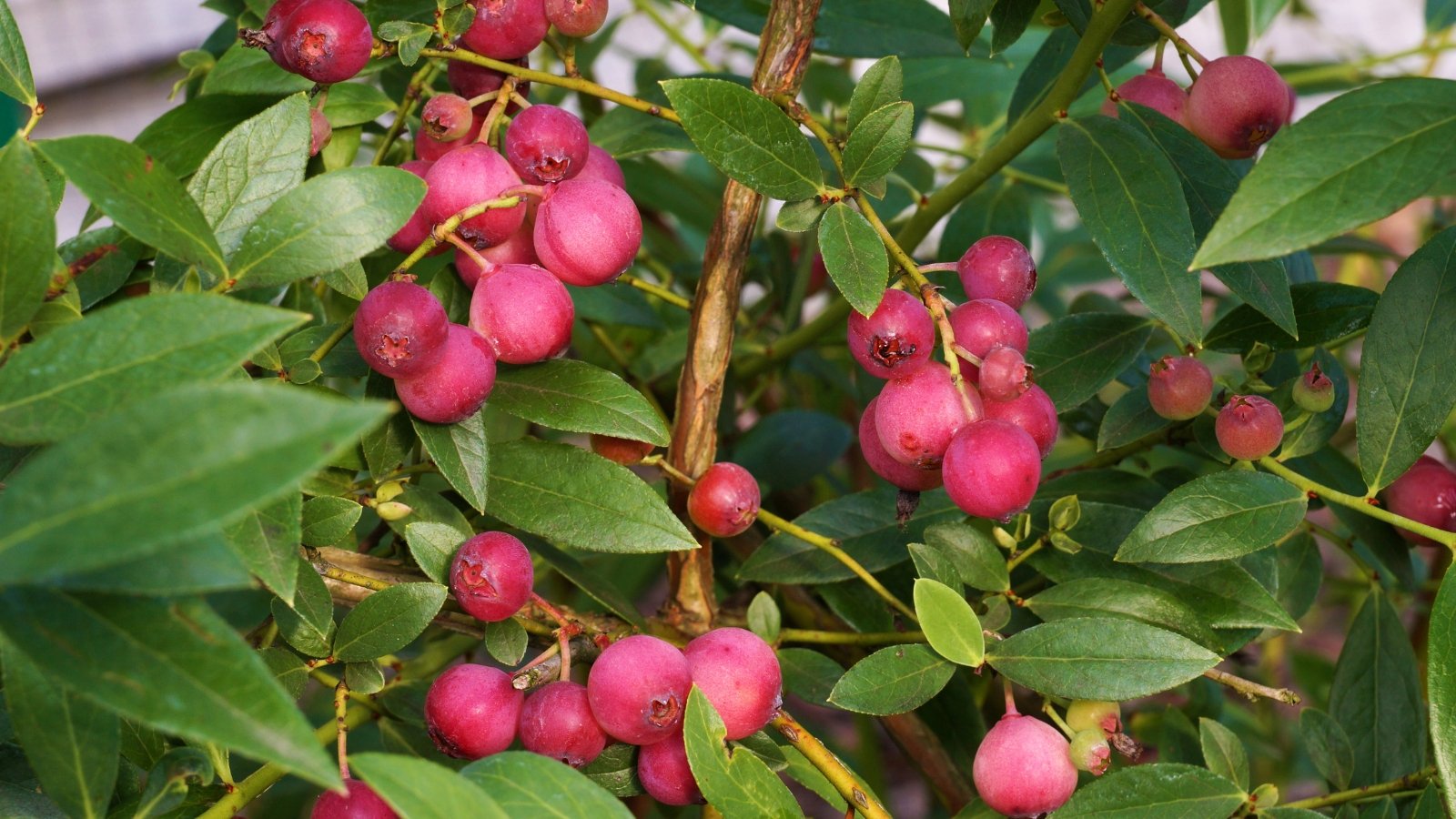
‘Pink Lemonade’ is a delightful, compact berry plant with pretty, blush-pink berries. They turn nearly red when ready to harvest. The fruits are small but very sweet, with a tasty citrus hint to their flavor.
Choose a large container big enough to accommodate your plant’s root ball. Maintain evenly moist soil, and enjoy the show! The foliage will transition to red and purple shades in the fall, offering visual appeal even after the harvest season.
While this cultivar is self-pollinating, you will see larger yields if you plant two or more nearby.
Blackberries
Blackberry bushes may not be the first thing that comes to mind when planning a container garden, but some cultivars were bred just for that. Trellis and pruning may still be necessary.
‘Chester’
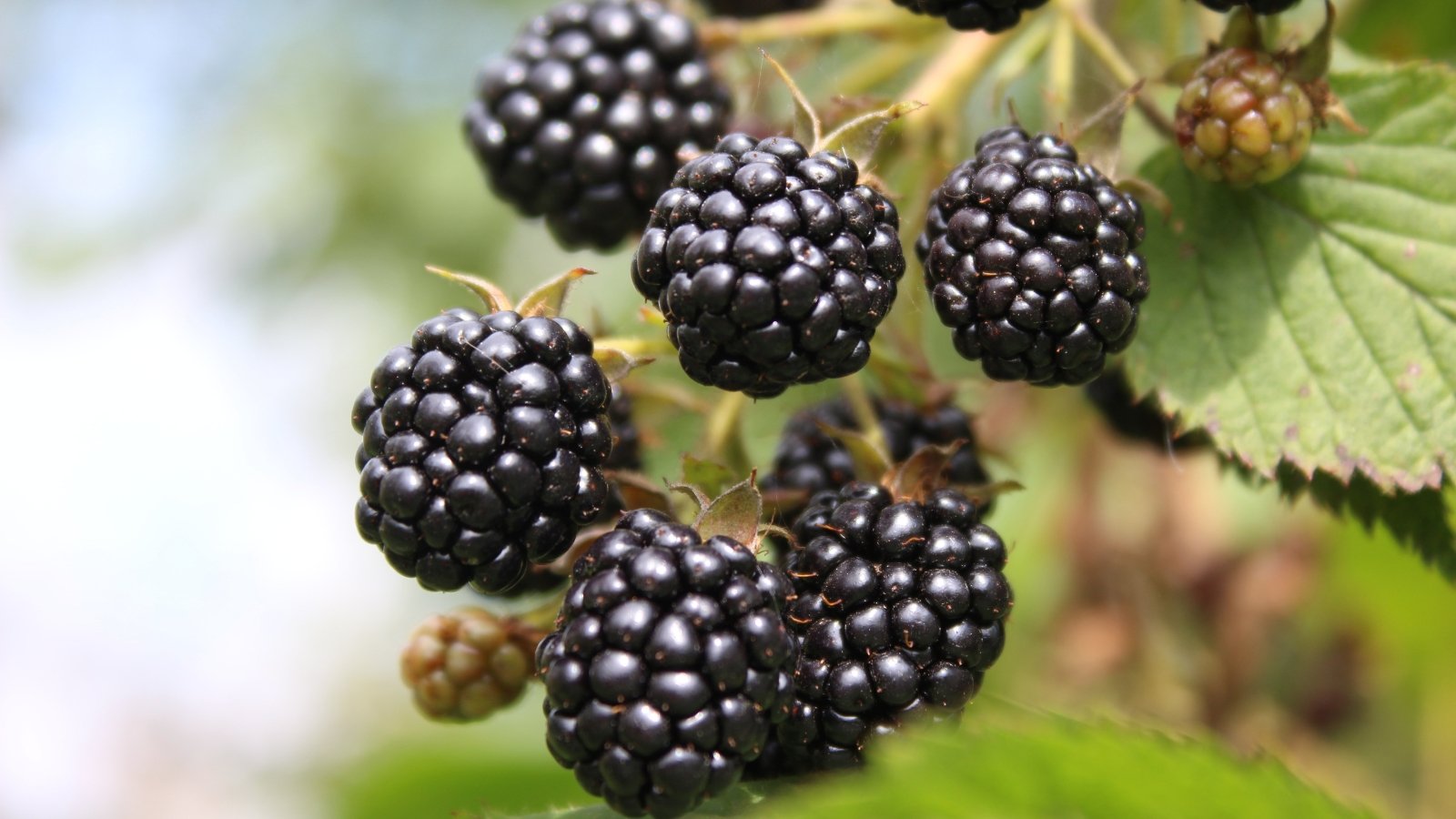
The firm, huge berries of ‘Chester’ won’t soften during transport or lose color in the heat. Plants are thornless, semi-erect, and self-pollinating.
Berries will be ready to harvest in the late summer. Plants can tolerate more heat than others and don’t mind dry weather. However, don’t allow the shallow roots of new transplants to dry out as they establish.
Mix the mild berries of ‘Chester’ with sweeter varieties and types for a delicious and sweet mixed berry jam or pie filling.
‘Black Magic™’
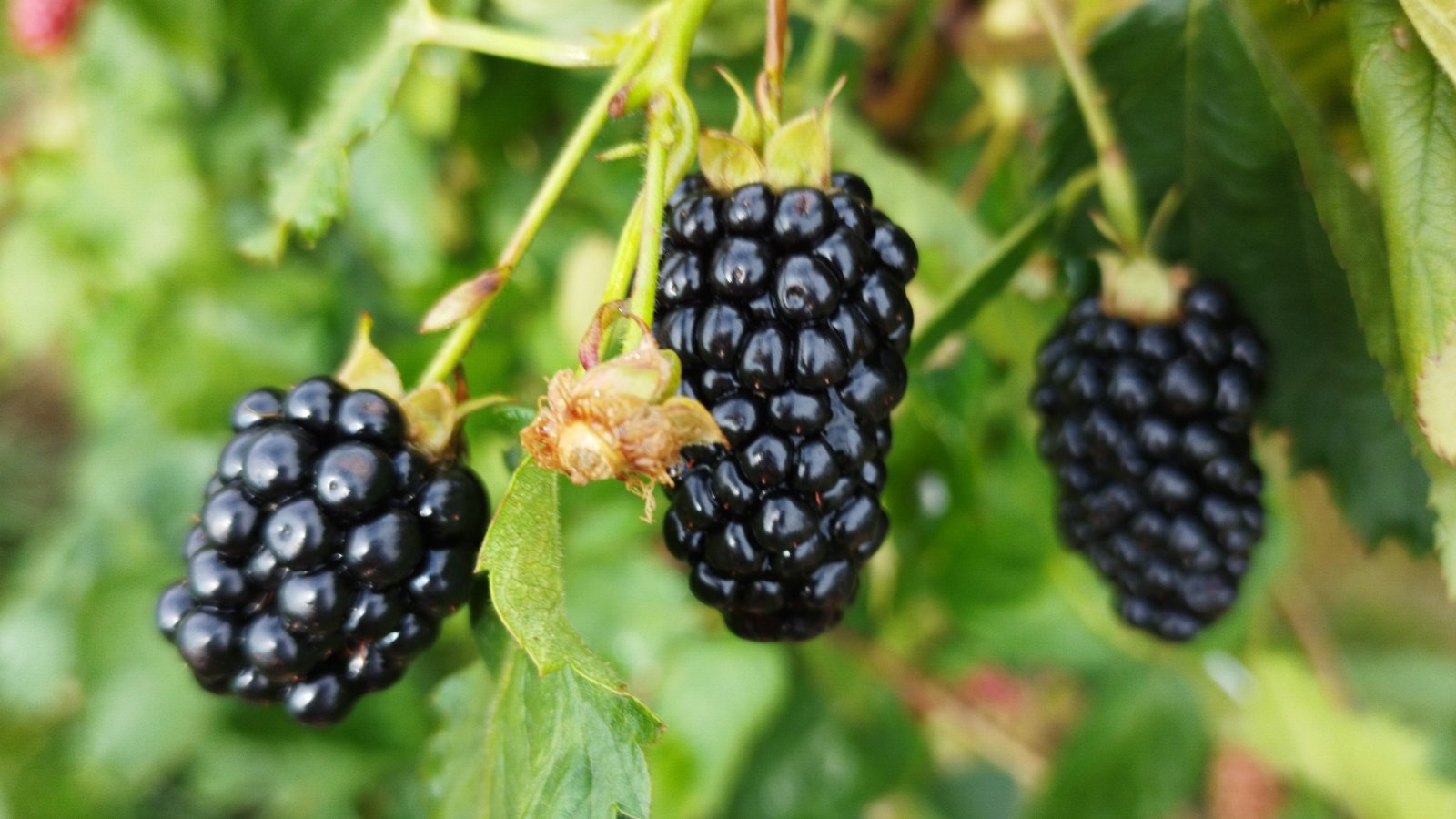
Huge berry alert! ‘Black Magic™’ produces a double crop of quarter-sized blackberries beginning in May, a little at a time, then again in late summer or early fall. The flavor is a balance of sweet and tart.
Glossy berries are deep purple, almost black and plants have a medium growth rate. The foliage is deep green. Canes support themselves and grow upright, perfect for patio containers.
‘Black Magic™’ is only lightly thorned, is self-pollinating, and has excellent heat tolerance.
‘Baby Cakes®’
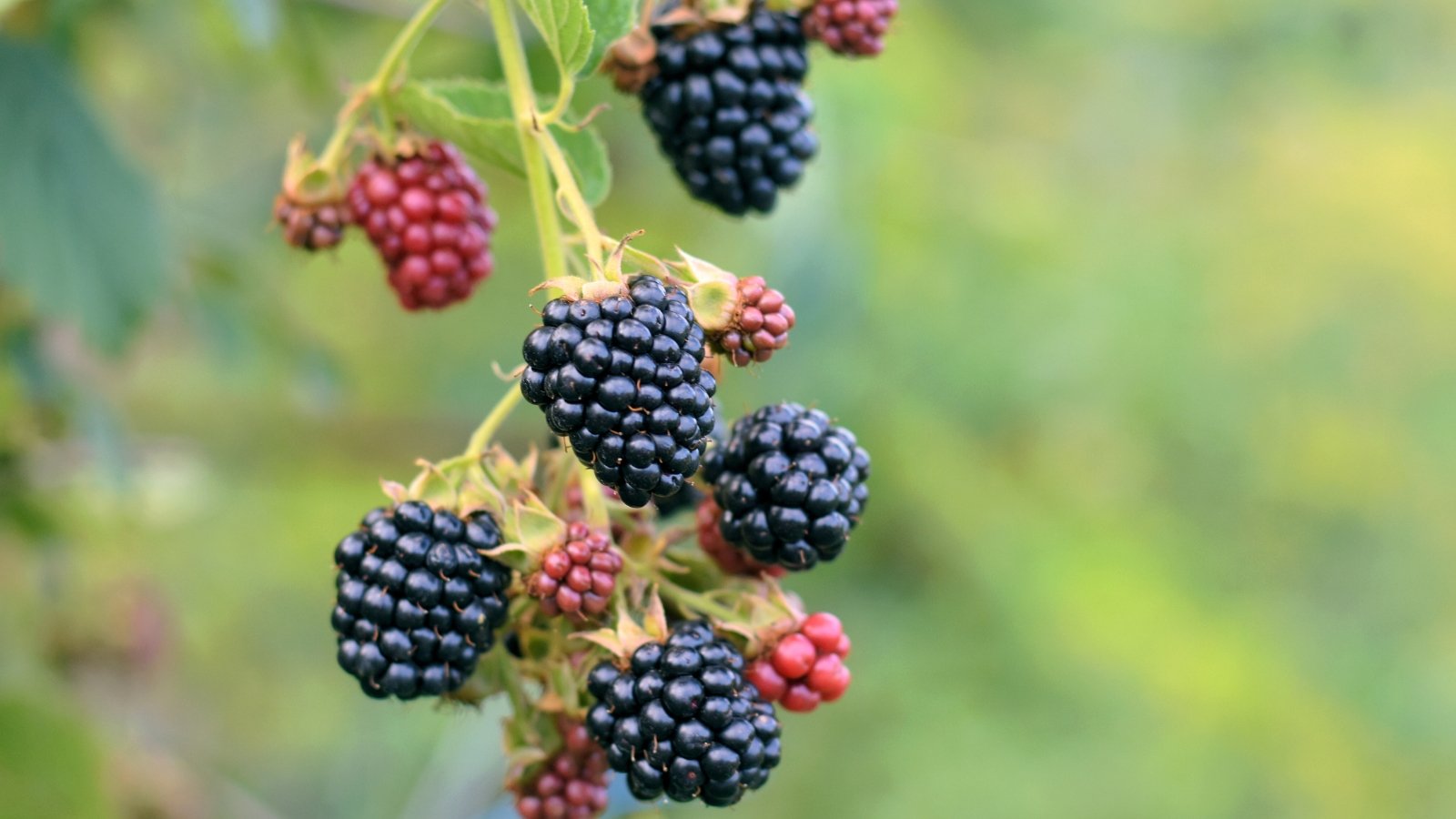
This is your classic large, sweet blackberry with great flavor. The hardest part will be not picking them too early when they’ll be too tart and mild for eating.
No trellis is needed for ‘Baby Cakes®’, and there are no thorns! Water consistently when newly transplanted, but allow some time between waterings to allow the top three inches to dry out once plants are established.
Warmer region growers may receive a decent-sized second flush in the fall. This variety is hardy and will overwinter down to zone 4.
Gooseberries
Though gooseberries aren’t a popular berry choice for home gardeners, they require little to no maintenance for big rewards.
‘Pixwell’
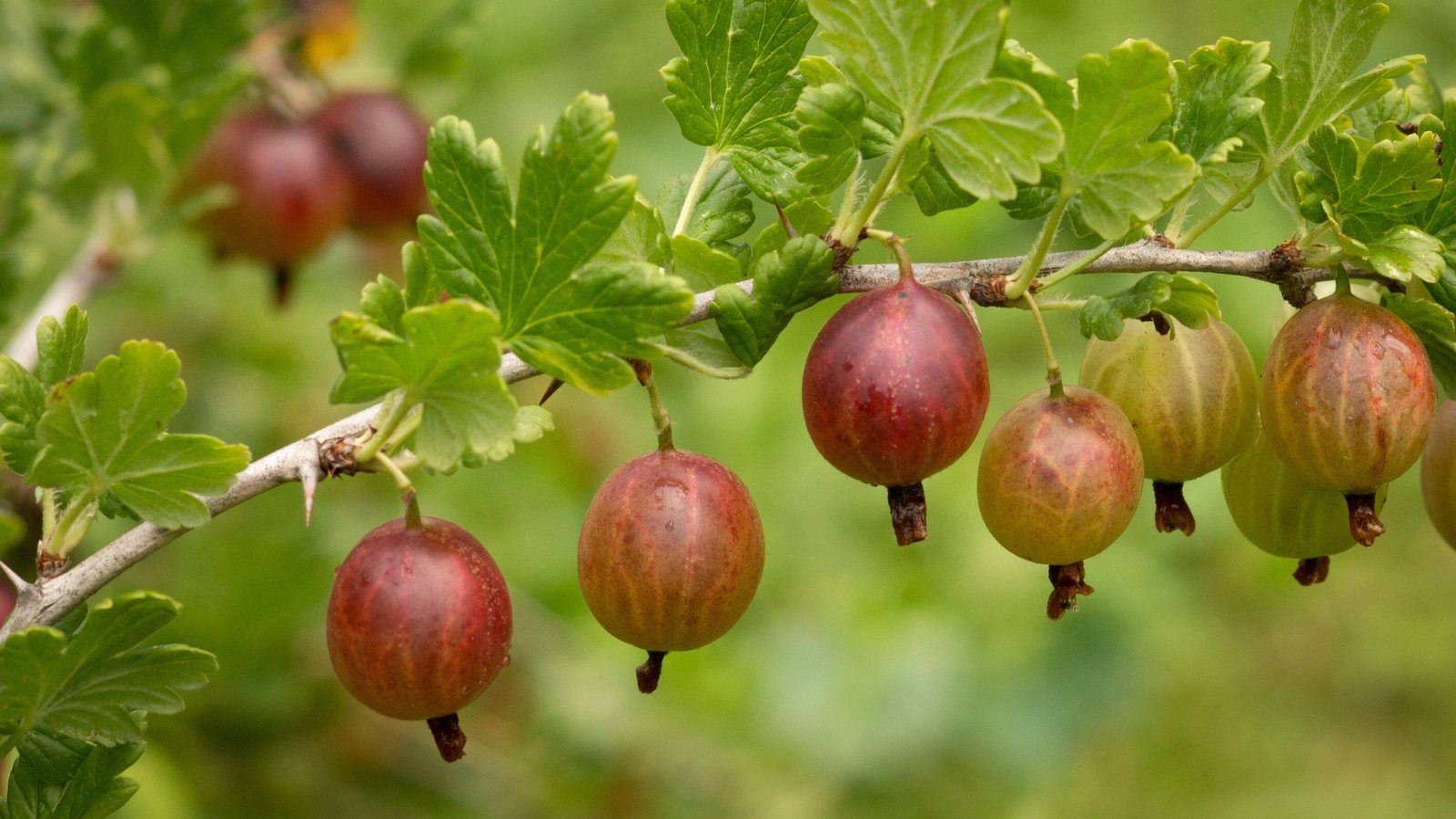
A nearly thornless gooseberry sounds like a dream after years of scratched arms and finger pricks in exchange for the tart berries. ‘Pixwell’ plants bloom with white flowers in the spring. Green, medium-sized berries will appear that will transition to a blush rose pink when ready to harvest in the summer. Gooseberries resemble purple grapes and sometimes feature light white striping.
The flavor is excellent in jams and jellies, simple syrup, and pie filling. Boil them with water and sugar, smash them, and strain out the pulp. Alternatively, though more labor-intensive, you can peel the skins off after boiling for a smoother-textured finished product.
Pro tip: When cooked, gooseberries are very gelatinous, so there’s no need to add gelatin when making jams and jellies.
Haskap Berries
A lesser-known superfood from Japan, meaning “berry of long life and good vision”.
‘Tundra’
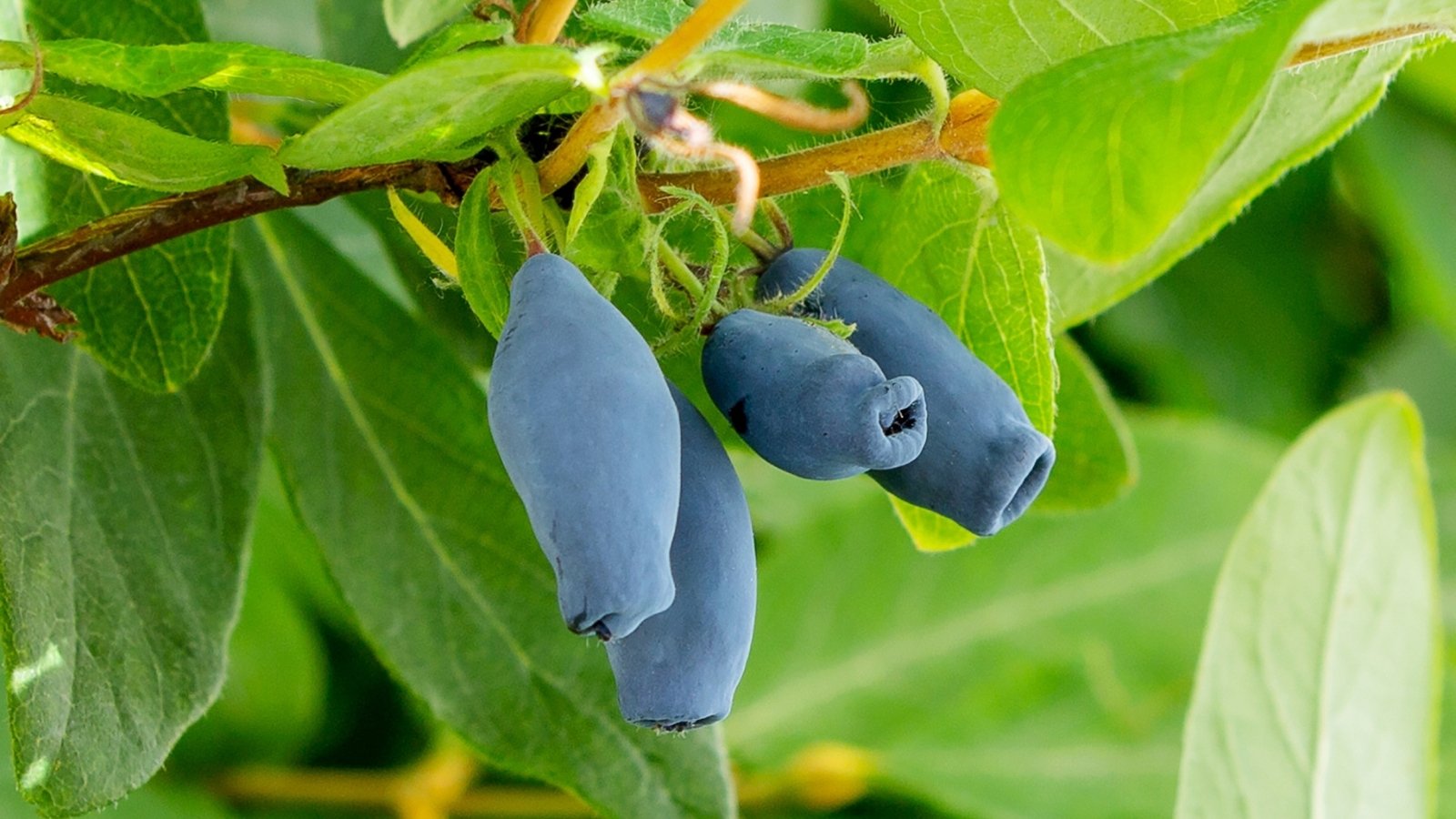
Haskap berries taste like a mix of blueberries and raspberries. They’re firm and rich in antioxidants. Their shape is unique: long and slender with a slight bulge around the center. The exterior skin is a dusty dark blue, similar to blueberries.
Fruits will ripen in mid-summer to early fall. Foliage is medium to dark grayish green, and leaves are slender. Spring-blooming flowers are white and funnel-shaped. Haskap berries are also called Blue Honeysuckle and Honeyberry.
Plants are moderately drought-resistant once established. Pollination is required.
Red Currants
Currants are easy to grow and highly nutritious, full of potassium, vitamin C, and antioxidants.
‘Perfection’
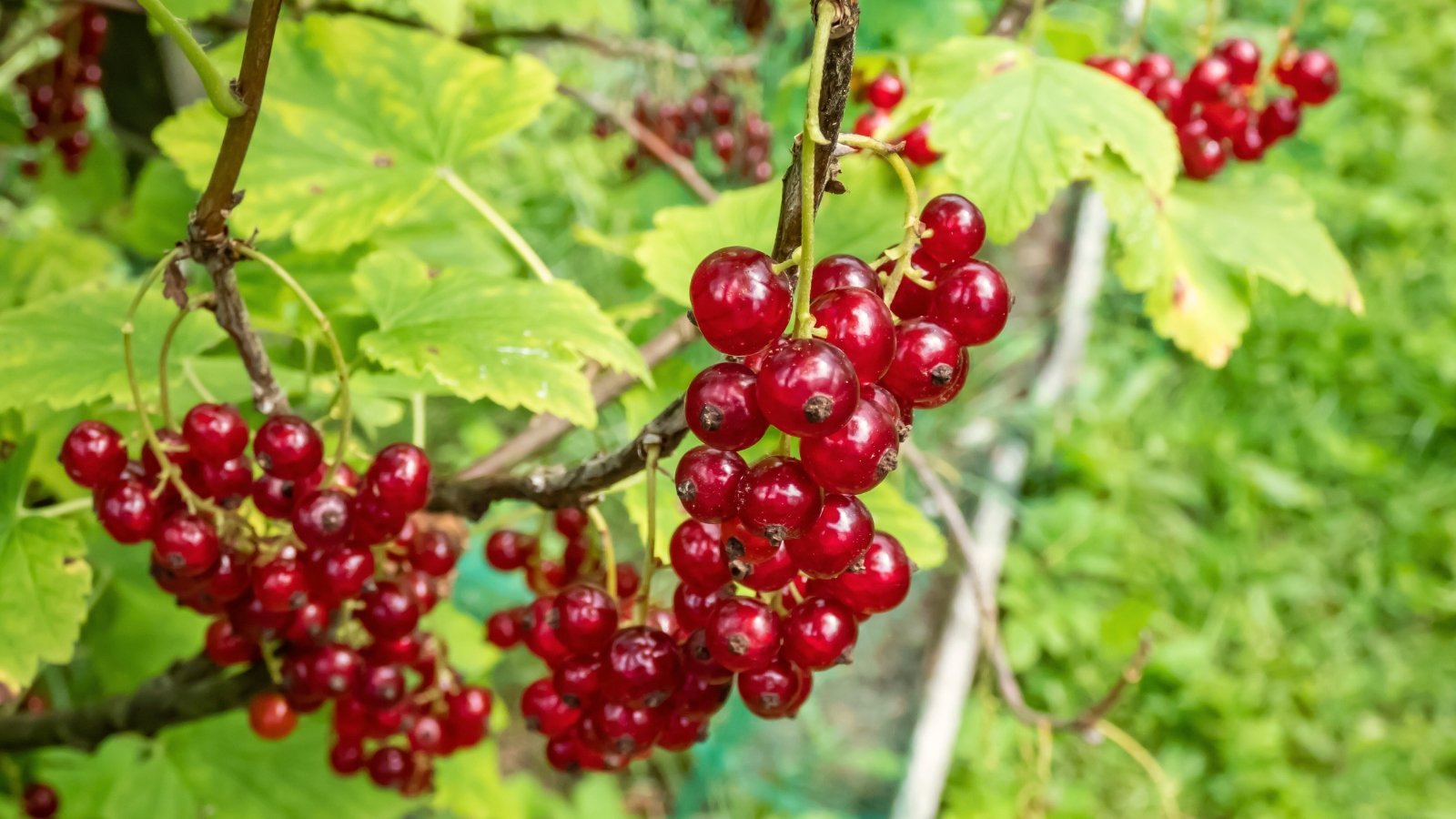
After growing this red currant variety, you’ll see why the name was chosen. It was introduced in New York in 1887 by Charles G. Hooker. It’s vigorous and low maintenance, producing high-quality and delicious tart red berries. Balance the tartness by blending them with red onions for a unique summer salsa or raspberries baked into a cobbler.
‘Perfection’ will produce more fruit when grown in full sun and be ready to harvest in July on the second or third year since planting. The plants are self-pollinating and prefer soil pH between 6.2 and 6.5.
While black currants are very susceptible to rust, red currants make poor disease hosts, so this shouldn’t be a concern. Look out for symptoms of fusarium, verticillium wilt, and stem blight.
Final Thoughts
Lots of delicious compact berry plants are perfect for small space and container gardens, so don’t shy away from growing berries. The most important thing is selecting a container conducive to the variety and berry type you’re growing so it has ample space to spread its roots, retain enough moisture, and produce all the berries!




